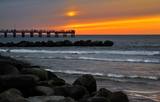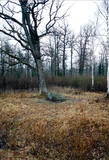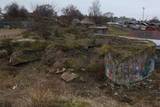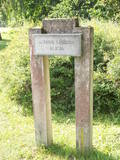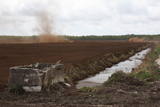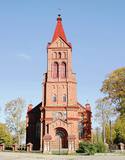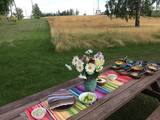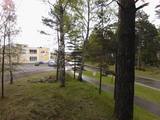| Nr | Nosaukums | Apraksts |
|---|---|---|
|
Atrodas Lielvārdē, Ausekļa ielā 14A, netālu no A6 ceļa. Kafejnīca ”Panna” atrodas Lielvārdes centrā un nodrošina pilnu ēdināšanas servisu kā brokastis, pusdienas, vakariņas, izbraukuma banketus. Tāpat ir iespējams pasūtīt sev tīkamus ēdienus, salātus, kulinārijas izstrādājumus un arī apkalpo banketus kafejnīcas telpās. |
||
|
Amatnieku biedrībā apvienojušies 65 Rūjienas un tās apkārtnes amatnieki. Piedāvā maizes cepšanu, ievārījuma vārīšanu, siera siešanas, rotu taisīšanu, ādas izstrādājumu, tamborēšanas un kulinārijas meistarklases. Piedāvā arī ,,Ražots Rūjienā" degustācijas (maize, kūpinājumi, kulinārijas izstrādājumi, ievārījumi, svaigas sulas, ķirbju produkcija, sezonas ogas un augļi, katrā sezonā citi ēdieni) un iepirkšanos. |
||
|
Palanga is known to be the biggest by-the-sea resort in Lithuania because of its seacoast's main attractions - dunes and white sand. And because Palanga is a resort there are plenty of cafes, restaurants, bars and more for those who would like to enjoy a meal or a drink, for those who like active sport - there is possibility to cycle, go horseback riding, swim and much more. |
||
|
Teritorija veidota ainaviskās Neres vidusteces ainavas, sugu un Lietuvas lielākā ozolu meža aizsardzībai.
|
||
|
Ķemeru nacionālais parks (dibināts 1997. g.) veidots g.k. mitrāju – seklās Rīgas līča piekrastes, aizaugošo piejūras ezeru, plašo purvu masīvu, mitro mežu (piemēram, dumbrāju) un palieņu pļavu - kā nozīmīgu daudzu augu (konstatētas 25 % no Latvijas Sarkanā grāmatā ierakstītajām augu sugām) un dzīvnieku, īpaši ligzdojošo un migrējošo putnu dzīves vietu aizsardzībai. Parka teritorijā atrodas viens no lielākajiem Latvijas purviem – Lielais Ķemeru tīrelis, kā arī citi – Zaļais purvs, Raganu purvs. Lielie purvu masīvi ir nozīmīga sērūdeņu izplūdes un ārstniecībā izmantojamo dūņu atrašanās vieta, kas savulaik bija slavenā Ķemeru kūrorta izveides pamats. Parka galvenie kultūras un vēstures objekti ir saistīti ar piekrastes kā atpūtas un veselības atgūšanas vietas izmantošanu. Parka teritorijā ir izveidotas izglītojošas dabas takas, velo un kājāmgājēju maršruti, putnu vērošanas torņi u.c. Parka apmeklētāju un informācijas centrs atrodas atjaunotajā Ķemeru „Meža mājā”.
|
||
|
Viens no populārākajiem Latgales tūrisma objektiem. No lielpaugura plakanās virsotnes (247 m vjl, ap 60 m virs tuvākā apkārtnes) paveras viena no skaistākajām Latgales ainavām un redzams 2 km attālais Rāznas ezers. Mākoņkalnā atradās 13. gs. celtā un praktiski neieņemamā Livonijas ordeņa Volkenbergas pils, - viens no pirmajiem Latgales nocietinājumiem, no kuras līdz mūsdienām saglabājušies tikai pils mūra fragmenti. Mākoņkalna pakājē atklāta piemiņas plāksne, kas vēsta par Latvijas pirmās brīvvalsts prezidenta Kārļa Ulmaņa Latgales apmeklējumu 1938. gadā. |
||
|
Kafejnīca "Dzirnaviņas" atrodas Rīgas – Liepājas autoceļa (A9) 67. km. Ceļotāju iecienīta pusdienu ieturēšanas vieta. Latviešu virtuve: skābeņu zupa, marinēta siļķe ar biezpienu, „Lauku azaids” (kartupeļi, ola, kūpināta gaļa, marinēts gurķis), cūkgaļas kotletes, Kurzemes strogonovs, sautēti skābi kāposti ar mednieku desiņām, miežu putraimu biezputra ar gaļu, rupjmaizes krēms, maizes zupa ar putukrējumu. |
||
|
Bolderājā – austrumos no Lielupes ielas un dienvidaustrumos no Jātnieku ielas Daugavas krastā ir saglabājušās paliekas no četrām uzspridzinātām batereju pozīcijām. Šīs baterejas, kurās atradās 152. kalibra lielgabali, ir daļa no kādreizējās Rīgas fortifikāciju sistēmas (sk. arī Komētfortu, Daugavgrīvas cietoksni, Mangaļsalas fortifikācijas), kuras mērķis bija aizsargāt pilsētu no uzbrucējiem, kas nāktu (nāca) no jūras puses. No batereju augšas labi redzama Daugava un no jauna uzbērtā Krievu salas ziemeļdaļa (milzīgs smilšu kalns). Šī vēstures pieminekļa un tās apkārtnes stāvoklis – vairāk kā bēdīgs ...
|
||
|
Neliela upīte ar dziļu, bet plašu ieleju, ko šķērso Vecumnieku – Ilūkstes ceļš. Vilkupes vārds saistās ar Kurzemes hercoga Jēkaba ambiciozo plānu savienot Daugavas un Lielupes baseina upes. Savienojošā kanāla darbi tika uzsākti, taču projekts tā arī dzīvē pilnībā netika īstenots. Vilkupe šajā plānā bija domāta kā viena no kanāla „sastāvdaļām”. Šeit ir vērts padomāt par radoša viduslaiku cilvēka ideju mērogu un inovācijām. Kanāla fragments atzīmēts un apskatāms nepilnus 4 km no apdzīvotās vietas ar nosaukumu Vilkupe.
|
||
|
Šī skata dēļ ir vērts braukt arī no tālienes. No Latvijas mērogā iespaidīgā reljefa veidojuma paveras tāls skats līdz pat Hānjas augstienei Igaunijā, kur zinātājs atpazīs arī Lielo Munameģi – Baltijas augstāko virsotni.
|
||
|
J.
Lībietis strādāja par Valsts Ķemeru sēravotu
iestādes direktoru no 1928. – 1944. gadam.
|
||
|
Teearu saimniecībā gatavo dažādus ēdienus no Peipusa ezera zivīm, īpaši iecienīts ir šeit gatavotais marinētais, kūpinātais breksis. Iespējams nobaudīt arī pēc tradicionālām metodēm kūpinātu gaļu. Var pasūtīt arī ēdināšanas pakalpojumus. |
||
|
Atrodas Stendes dienviddaļā. Piedāvā maltītes visām ēdienreizēm. Konditoreja, kulinārija. Āra terase un labiekārtota apkaime. |
||
|
Dabas liegums veidots ar mērķi aizsargāt dažādus mitrāju biotopus – t.sk. Lielo Ķirbas purvu un tajā esošās aizsargājamās augu sugas. Aizsardzība statuss ir piešķirts cilvēka mazietekmētajai purva rietumdaļai, taču pārējās purva platības tiek izmantota g.k. intensīvai kūdras ieguvei, bet neliela daļa – lielogu dzērveņu audzēšanai. Ķirbas purva dabas lieguma daļa nav labiekārtota un piemērota apmeklējumiem.
|
||
|
Ciskādu Sv. Jāņa Kristītāja Romas katoļu baznīca uzbūvēta ap 1900. gadu
no akmens un sarkanķieģeļiem romāņu stilā, ievērojama ar gleznu „Madonna
ar bērnu’’, krucifiksu un ērģelēm.
|
||
|
Latvijas plostnieku galvaspilsēta ar ikgadējiem plostnieku svētkiem maijā. |
||
|
35 m plats un 0,5m augsts Abavas upes ūdenskritums. Blakus labiekārtota teritorija ar teltsvietām, šūpolēm, piknika un ugunskura vietām. Iespējams apmeklēt visu gadu. Netālu Sabiles vīna kalns, Pedvāles Brīvdabas māksas muzejs, trulīšu nobrauktuve "Sventes dzirnavas" un citas apmeklēšanas vērtas vietas.
|
||
|
Atrodas Dunduru pļavu ziemeļdaļā - Melnragu rīkles galā. Uzbērts mākslīgi, izlīkumojot Slampes upītes gultni. No kurgāna pārskatāmas pļavas ar dzīvei savvaļā pielāgotajiem mājlopiem, kā arī neliels atjaunotās Slampes posms. Interesants skats būs palu laikā, kad applūst apkārtējās palienes. Putnu vērošanas vieta.
|
||
|
Ičas apmetnes ciems ir sena dzīvesvieta Ičas upes krastos. Apmetne atklāta 1937. gadā. Tā bijusi apdzīvota neolītā (4500 - 1500 pr.Kr.) un bronzas laikmetā (1500 - 500 pr.Kr.). Apmetnē dzīvojuši amatnieki, zvejnieki, mednieki.
|
||
|
K. Valdemāra bibliogrāfijā ir zināms fakts, ka 1839. gada vasarā Lubezeres tautskolas skolotāji un skolēni dažas dienas pavadīja jūrmalā, - 19 verstis attālajā Rojas ciemā, kur vēlāk ar Valdemāra starpniecību tika uzcelta jūrskola. Šī pirmā satikšanās ar jūru atstāja uz zēnu elpu aizraujošu, neaizmirstamu iespaidu. „Jūras dižans izskats tik vareni sagrāba jaunekļa garu, ka tas visas trīs dienas gandrīz neko citu nedomāja kā par dižano jūru, pie kā ar bērnišķīgu drošumu jau toreiz tūlīt sataisīja plānu jeb projektu, kādā vīzē varētu Rojas upē ietaisīt dziļāku ostu, lai tur palielas laivas un mazi kuģi varētu ienākt.” Kr.Valdemārs. (Avots: Rojas TIC) |
||



